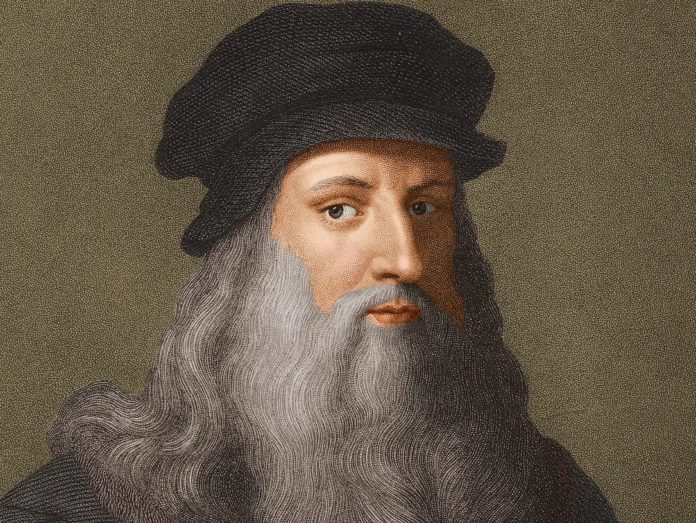
When most people talk about Leonardo da Vinci, they never fail to mention some of his most famous works like Bacchus, Mona Lisa, and Annunciation. However, as a true man of the Renaissance, da Vinci’s talent, knowledge, and skills went far beyond art since he was also an inventor and engineer among many other things. Armed with brilliant intellect, never-ending curiosity, and a love for both art and science, Leonardo was probably one of the most diversely gifted people to have ever lived with his paintings, drawings, and inventions inspiring numerous future generations of engineers, scientists, and artists alike.
Many of the artist’s inventions never became a reality while he was alive since they were way ahead of their time, however, they have served as both an inspiration and foundation for some of the most incredible innovations we still use today. Simply looking through the extensive notebook collection, it is evident that Leonardo truly had a passion for several things, especially the laws of nature which inspired many of his unbelievable creations.
So if you are curious and would like to learn more about da Vinci himself, as well as about some of his best ideas and creations, here is everything you need to know.
A Brief Biography
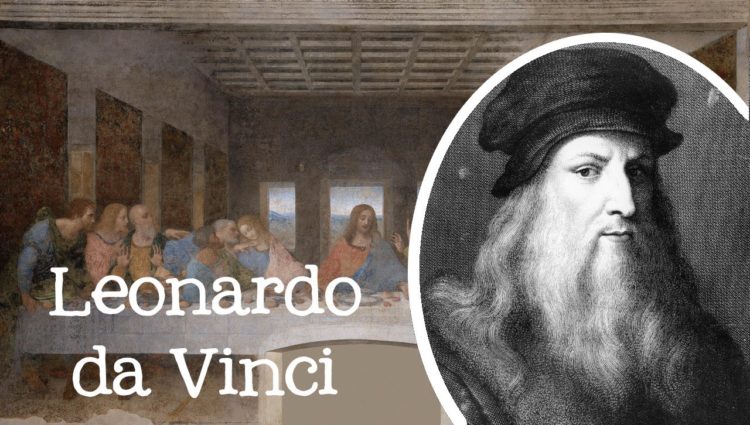
The artist was born in Tuscany, Italy, in 1452 and received minimal education during his childhood, only learning basic reading, writing, and math. However, what was obvious from a very young age was his artistic talent and he started an apprenticeship when he was only 14, learning from a renowned artist Verrochio everything about painting techniques, color, drawing, and art in general.
He ended his apprenticeship after 6 years and became a master artist, opening a workshop of his own, even though he kept working with his mentor for an additional 6 years.
Even though he is best known as a painter, he wasn’t a very prolific one, producing less than 25 paintings in his life. And here’s a fun fact – for him, the Mona Lisa was always a work in progress since he was reaching for perfection while painting it. Because it was never considered finished, the painter never sold or parted from it.
Interestingly, a lot of his engineering creations were primarily made for military use, although he was known to be completely opposed to war. He passed away at the age of 67, continuing his studies in various fields until the end.
Many of Leonardo’s inventions were never patented since they weren’t made into actual machines or devices, but today, there are many companies that can help inventors do this. Firms such as InventHelp can aid people to submit their product ideas or inventions to various industries and can help with the patent application as well, so make sure to visit this website for more input.
The Inventions
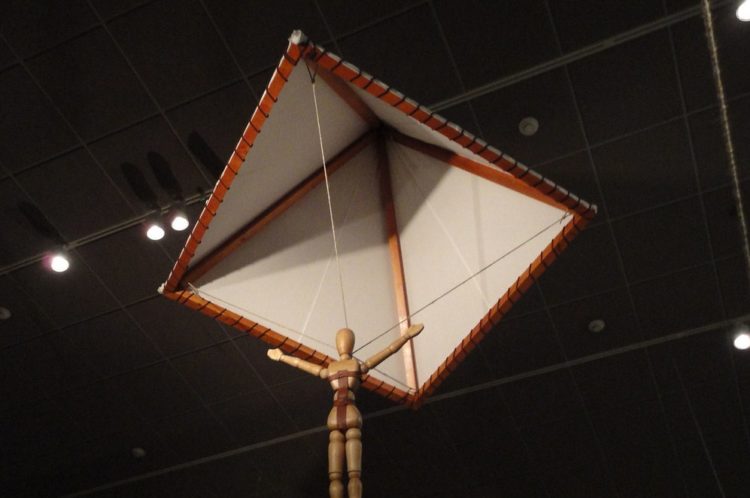
1. The Parachute
Da Vinci strived to create a machine that could take humans up in the sky, so it is only logical that he also designed something to get them to ground safely in case of an emergency. Unlike parachutes we see today, his was made of linen, had the shape of a pyramid, and a wooden frame too.
You might find it interesting to know that the parachute was tested in 2000 by a professional skydiver. And although it was discovered that its shape offered a smoother ride, the wooden frame was found to be the problem since it posed a danger of injuring or crushing a person once they reached the ground.
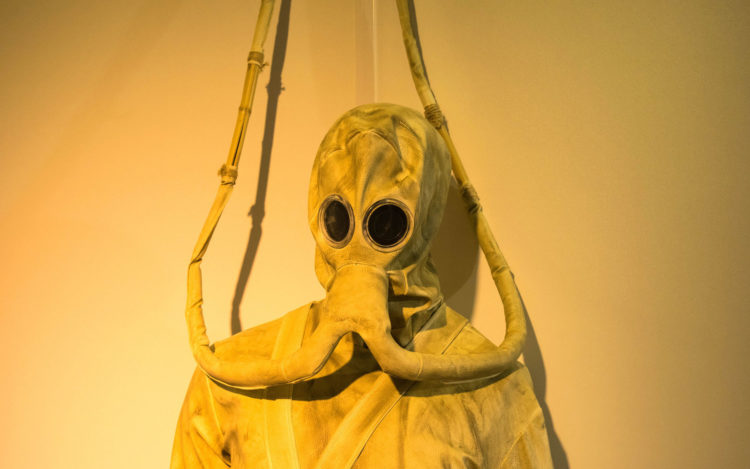
2. Diving Suit & Equipment
There were no limits and borders when it came to da Vinci’s ideas, so it should not be surprising that he was hired to come up with a creation that would allow soldiers to move and breath underwater, as a way of sabotaging enemy ships by cutting holes at the bottom of their hulls.
Just like with many other of his creations, the diving suit was not needed at that time and was only tested during the initial, planning stages. The suit consisted of a mask, goggles, and was completely made from leather. It also featured cane tubes that were attached to the mask and that supplied divers with air from the surface. Using a balloon, the divers controlled the descending and ascending.
Interestingly, da Vinci also played around with the idea of storing air underwater, his suit baring uncanny similarities with the diving equipment that is used today, meaning it was about 400 years ahead of its time.
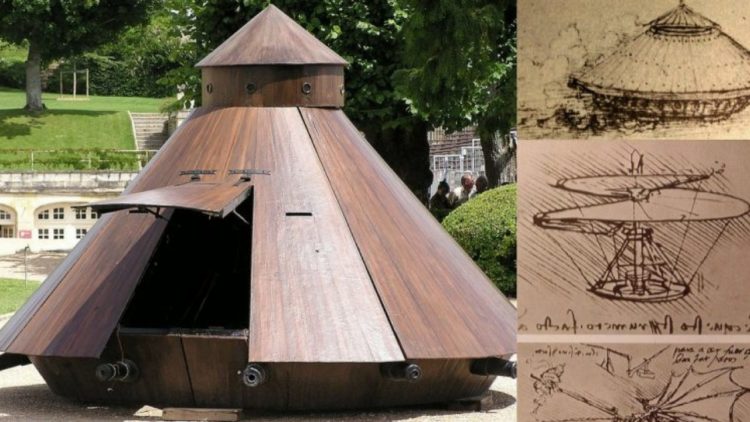
3. Armored Vehicle (A Tank)
Five centuries before tanks were developed and successfully used in 1916, da Vinci developed the armored vehicle, a battle machine many consider to be the prototype and predecessor of the modern tank. It was meant to be operated, more specifically pushed, by up to 8 men and could carry guns or cannons.
Taking inspiration from a turtle’s shell, it came in the shape of a cone, built from protective, thick wood and metal plates. Due to its shape, it could fire from any direction, making the vehicle practically indestructible. Although it was also supposed to be able to move in any direction, the gear system was faulty, something today’s engineers believe wasn’t due to a mistake in the design. According to many, Leonardo purposely built a faulty system since he was a strong opponent of war.
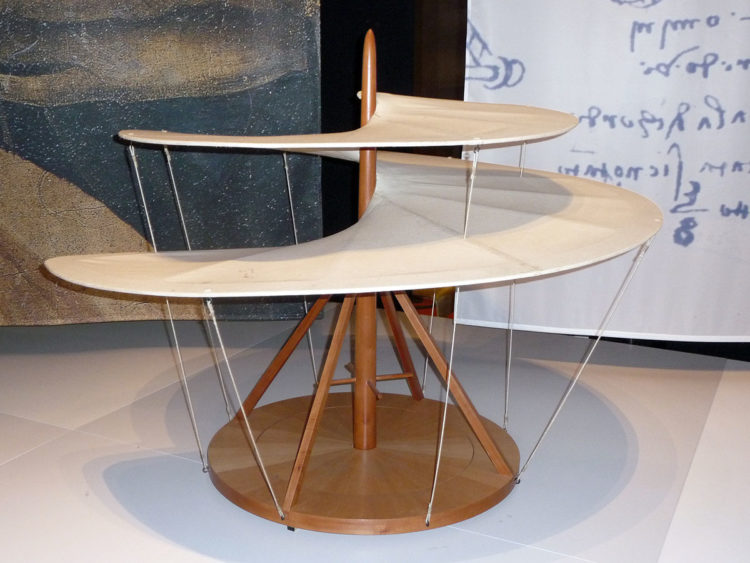
4. The Aerial Screw
By now, it shouldn’t come as a surprise that another one of Leonardo’s ideas inspired a future concept and modern-day invention. Just taking a swift glance at the aerial screw, you will see the uncanny resemblance to a contemporary helicopter.
The twisted linen surface and its bottom construction were meant to be held and spun around by a person, compressing air, and inducing flight in the process. However, scientists have concluded that the device would be impossible to operate since people couldn’t produce enough muscle power to keep it in the air.
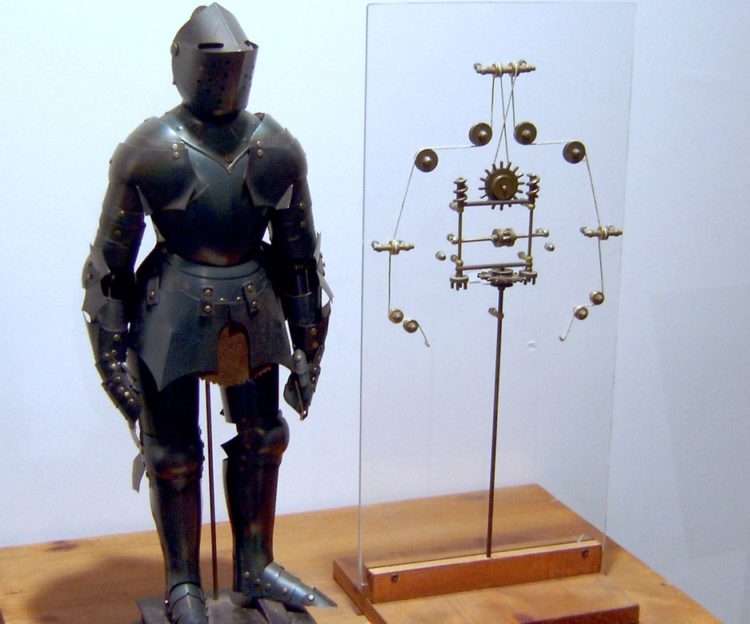
5. A Robot
What da Vinci created in the 15th century wasn’t the type of robot we know today, but something called an automaton – a machine that could move and operate on its own. Known as the mechanical knight, the humanoid machine was supposedly able to move its arms, sit, and stand all on its own thanks to the wheels, cables, and gears it was meant to be built with.
In 2002, based on da Vinci’s preserved sketches and notes, scientist Mark Rosheim managed to build the artist’s automaton, proving that it could, indeed, do all the things da Vinci claimed.
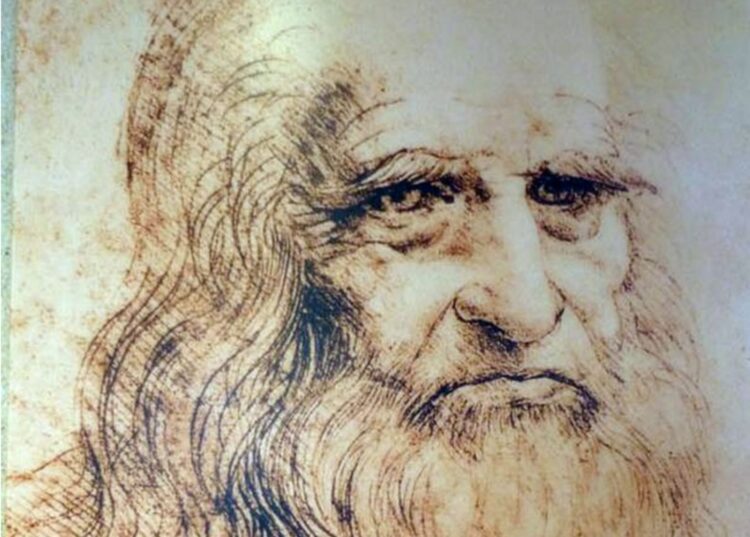
Conclusion
Leonardo will always be one of the most renowned artists to have ever lived but should be recognized for his brilliance, ingenuity, and artistry in many other fields as well. He was someone who had dedicated his entire life to creating amazing ideas and inventions, something that has inspired numerous people and is admired today.
The creations mentioned above are just a small portion of everything Leonardo has designed and invented during his life and they can all be found in his notebooks and private journals where the artist drew and wrote about them all the time.











